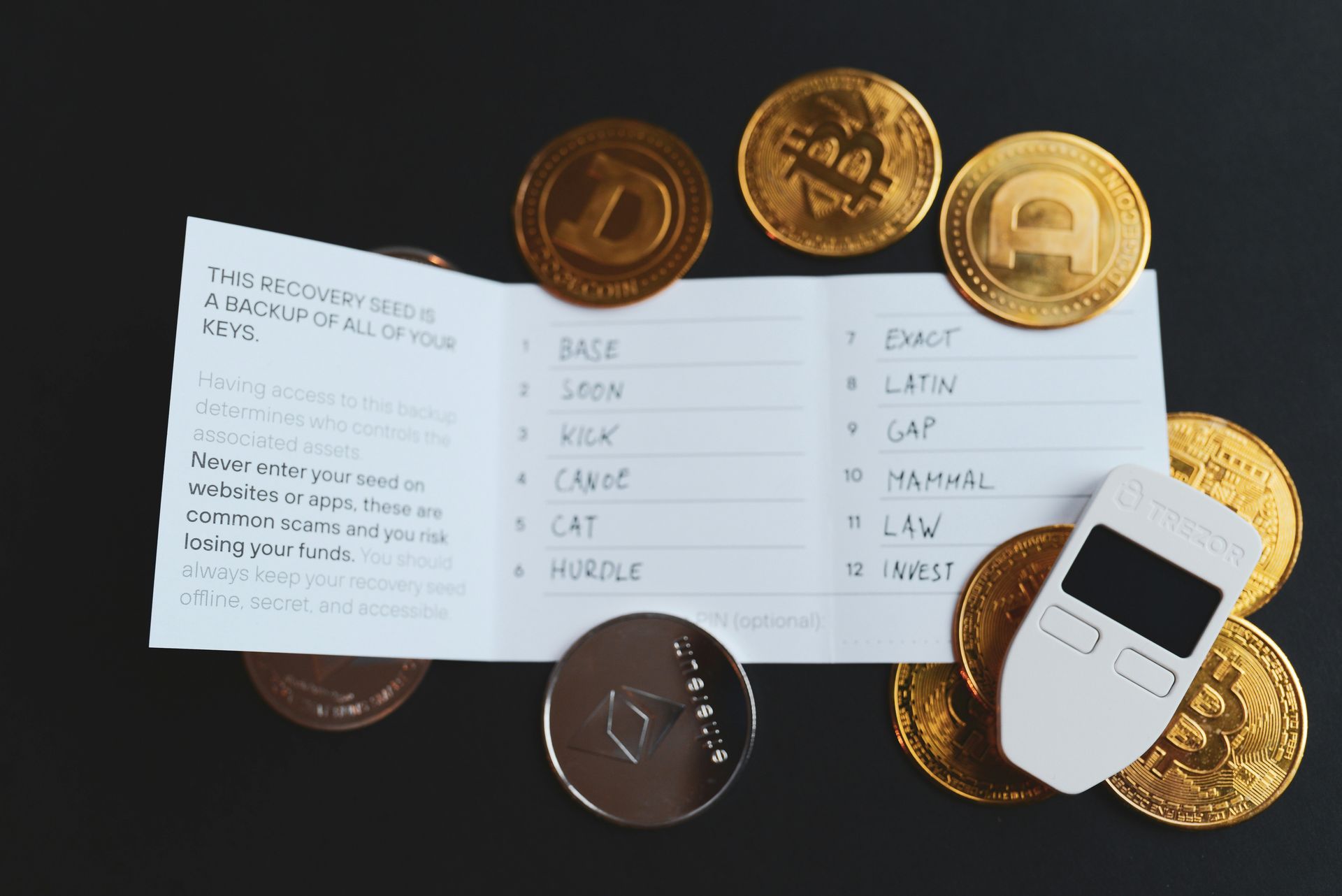Differences between crypto wallets and e-wallets

Crypto wallets and e-wallets serve distinct yet complementary roles in managing digital assets and transactions. While both are digital tools designed to facilitate the storage and transfer of funds, they cater to different needs within the digital and financial ecosystems.
Crypto wallets and e-wallets serve different purposes, what are the key differences between the two?
PurposeCrypto wallets are specialized tools for storing, sending, and receiving cryptocurrencies like Bitcoin, Ethereum, or other tokens. According to Kane Pepi from Techopedia, there are several different crypto wallets, including hardware, software, and paper wallets. Selecting the best wallet comes down to your goals, supported cryptocurrencies, and experience. These wallets also store private keys, which are crucial for accessing and managing blockchain-based assets. They serve as the gateway for users to interact with blockchain ecosystems. Many modern wallets support multiple cryptocurrencies, making them versatile tools for users managing diverse crypto portfolios.
Designed primarily for fiat currency (such as USD and EUR) transactions, e-wallets are used for online shopping and peer-to-peer payment. Popular e-wallets include PayPal, Apple Pay, and Netteller, which streamlines the payment process for online and in-person transactions by storing payment details such as credit/debit card numbers or bank account information. Users can make payments with a single tap or click, avoiding repetitive data entry. An e-wallet, or digital wallet, is designed to store and manage payment information securely and facilitate digital transactions.
Asset types supportedCrypto wallets handle cryptocurrencies and sometimes non-fungible tokens (NFTs). They are tailored to blockchain-based assets, which can vary depending on the wallet’s compatibility. Wallet compatibility depends on the specific blockchain or token standard, so users must select a wallet suited to the assets they intend to manage.
 (Image credit)
(Image credit)
On the other hand, an e-wallet supports a range of digital and financial assets, primarily focused on enabling convenient and secure payment options. They deal with fiat currencies and support payments for goods and services. They may also store loyalty cards, tickets, or boarding passes. These features make e-wallets versatile for managing a variety of everyday and digital financial needs.
Use casesCrypto wallets are ideal for crypto enthusiasts, investors, and those engaging in decentralized finance (DeFi) or blockchain-based activities. The primary function of crypto wallets is securely storing private keys that grant access to cryptocurrencies like Bitcoin, Ethereum, and altcoins.
Users can send, receive, and manage cryptocurrencies for payments, remittances, or transfers across the globe with lower fees and faster processing compared to traditional methods. Wallets enable access to DeFi platforms where users can lend, borrow, or earn interest on their crypto assets. Many wallets support NFTs, allowing users to buy, sell, and store digital art or collectibles.
E-wallets are suitable for everyday digital payments, online purchases, and transferring fiat money among individuals. It allows users to securely pay for goods and services on e-commerce platforms, simplifying the checkout process. With contactless technology, users can make instant payments at physical stores using smartphones or wearables. Many e-wallets allow users to pay utility bills, subscriptions, and even taxes directly from their wallet balance, streamlining regular payments.
E-wallets enable individuals to send money to friends and family quickly. For instance, PayPal or Revolut enables users to send money across borders, often with lower fees and faster processing times compared to traditional banking methods. Services like Venmo or Zelle make it easy to split bills, pay for shared expenses, or send money internationally.
DecentralizationCrypto wallets are often decentralized, meaning users have full control over their funds without relying on intermediaries. The ownership and management of funds are directly under the user’s control, adhering to the principles of decentralization. Most crypto wallets are non-custodial, meaning that the wallet provider does not have access to your private keys or funds. However, custodial wallets (e.g., wallets provided by exchanges) are centralized.
A custodial crypto wallet is a type of digital wallet where a third-party service provider manages the storage of private keys and assets on behalf of the user. In other words, the provider has control over the user’s crypto funds, unlike non-custodial wallets where users hold their own private keys. Wallets like MetaMask, Trust Wallet, or hardware wallets like Ledger store the user’s keys locally and let the user interact directly with the blockchain without needing a trusted third party.
Traditional e-wallets are generally more centralized, meaning they depend on a third-party service provider to hold and manage your funds or payment information. With these wallets, the service provider has access to the user’s account data, and transactions often occur through the provider’s network.
Most e-wallets are custodial, where the service provider holds your funds in a centralized database, effectively controlling your funds until you choose to use them. These wallets offer convenience but at the cost of giving up some control and security. PayPal, Venmo, and Google Pay store your money in their centralized systems and facilitate transactions through their platforms.
Transaction speeds and costsTransaction times depend on blockchain networks, which can range from seconds to hours, with fees varying based on network congestion. Speeds also vary based on the blockchain. For example, Bitcoin transactions can take 10 minutes or longer due to their block confirmation time, while Ethereum processes transactions in about 12-15 seconds. Other networks like Solana or Binance Smart Chain offer near-instant transactions.
Fees are determined by the blockchain network, not the wallet itself. Bitcoin and Ethereum fees can fluctuate widely depending on network demand, sometimes reaching significant amounts during congestion. Blockchains with lower costs, like Polygon or Solana, offer cheaper alternatives, often costing fractions of a cent. Crypto wallets may also charge additional service fees, especially if they are custodial or integrated with exchanges.
E-wallet transactions are typically instantaneous or near-instant for most use cases, such as transferring money between users or making payments. For bank-linked transfers, processing can take longer (1-3 business days) depending on the financial institution involved. Fees are usually minimal or non-existent for peer-to-peer transactions within the same e-wallet ecosystem (e.g., PayPal to PayPal or Venmo to Venmo).
Cross-border or currency conversion transactions may incur higher fees, which vary based on the e-wallet provider and the amount transferred. Some e-wallets charge fixed transaction fees or a percentage of the transaction amount for payments involving linked cards or banks. e-wallets are designed to minimize friction in transactions, offering fast and cost-effective solutions for digital payments.
 (Image credit)
Technology and security
(Image credit)
Technology and security
These wallets are heavily reliant on blockchain technology. Security is paramount because private keys stored in these wallets give access to funds. They may be software-based (hot wallets) or hardware-based (cold wallets). Some wallets support multi-signature or biometric authentication for added security. Wallets interact with blockchain networks to record transactions, ensuring that all transfers are secure and transparent. By combining blockchain-based cryptographic principles and robust user-focused protections, crypto wallets ensure the safe and efficient management of digital assets.
Often linked to credit cards or bank accounts, e-wallets rely on traditional banking infrastructure. They also rely on advanced technology and security measures to provide a safe and convenient way to manage digital payments. Security measures include encryption and two-factor authentication, but they don’t involve private keys. E-wallets often partner with banks and payment networks, ensuring compliance with stringent security standards.
ConclusionCrypto wallets are for managing cryptocurrencies and interacting with blockchain technology, while e-wallets cater to fiat currency transactions and traditional online payments. The choice between them depends on the type of assets you wish to manage and the purpose of your transactions.
The primary purpose of a crypto wallet is to securely store and manage the private keys required to access and control cryptocurrencies. Unlike traditional wallets that hold physical money, crypto wallets interact with blockchain networks, enabling users to send, receive, and manage digital assets.
